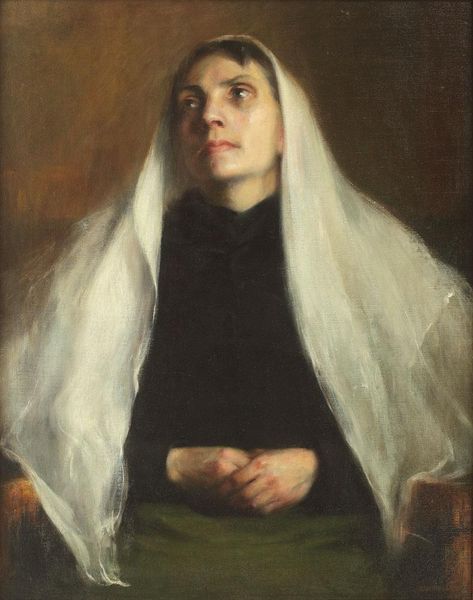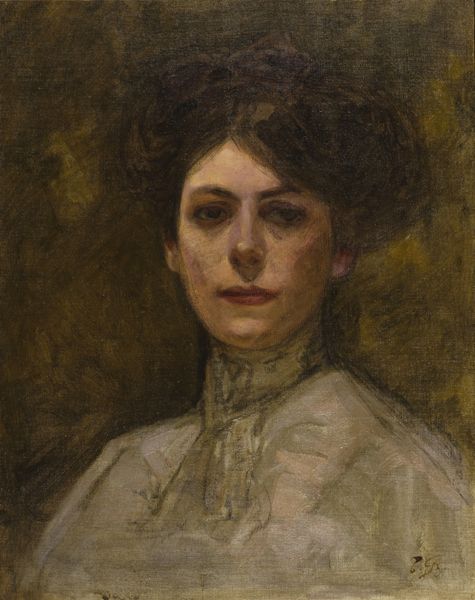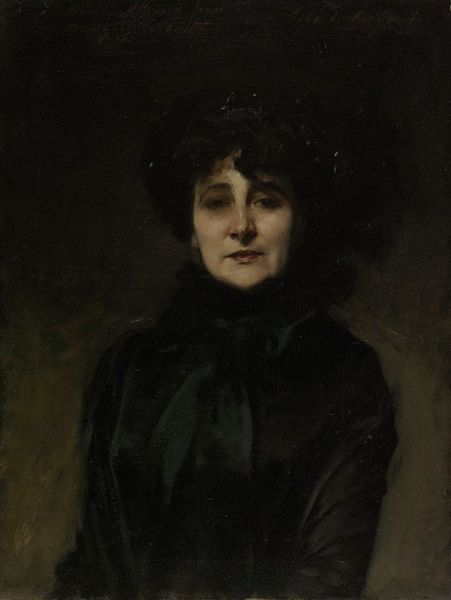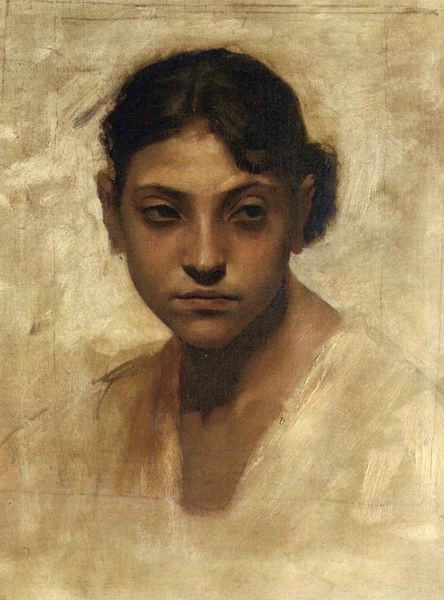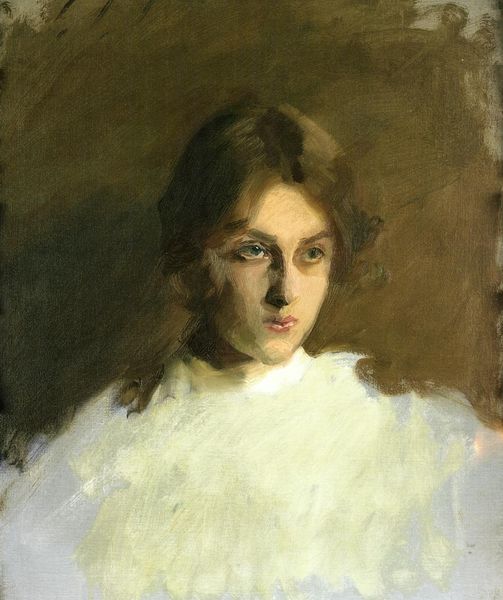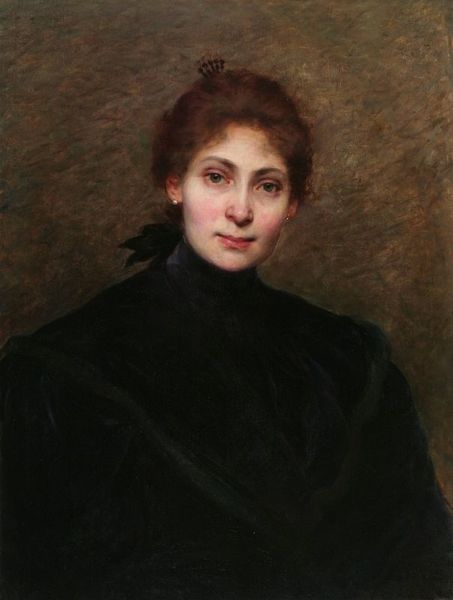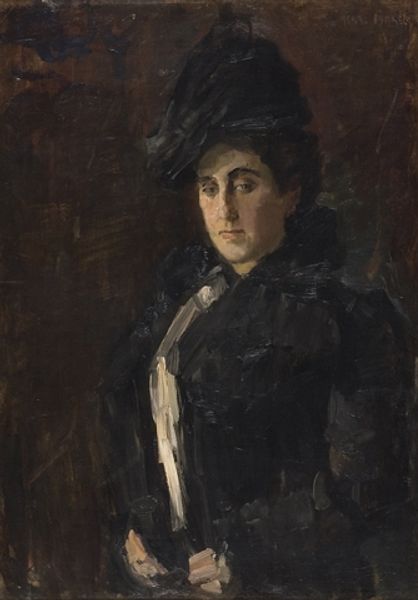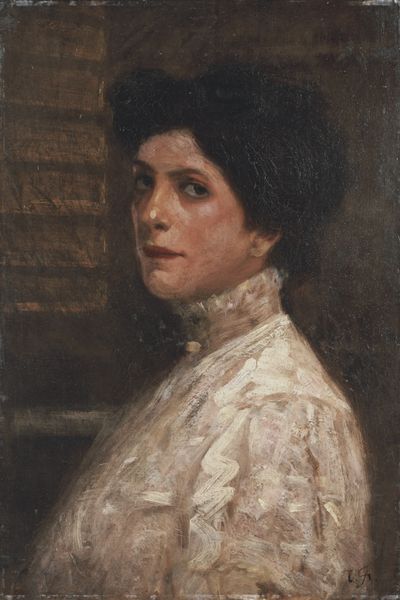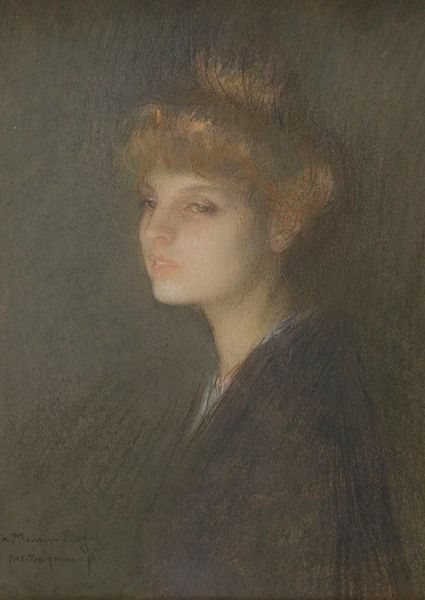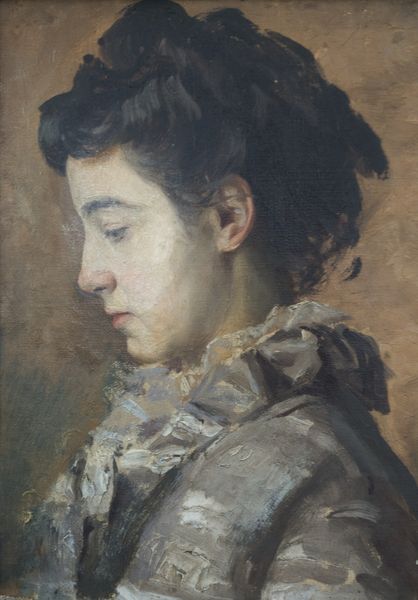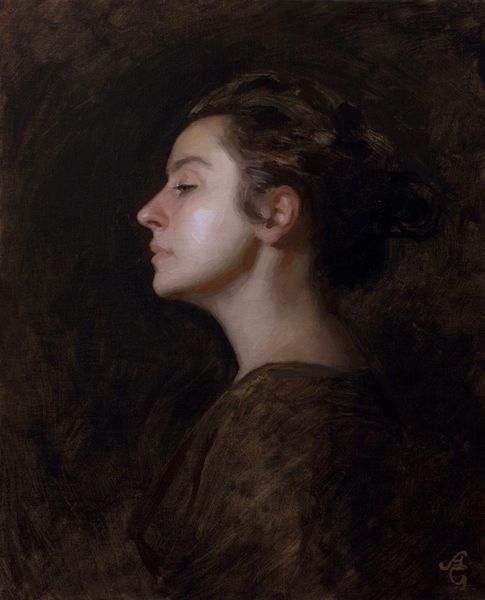
Dimensions: 58.42 x 48.26 cm
Copyright: Public domain
Curator: Here we have John Singer Sargent's oil painting "Eleanora Duse," created in 1893. Editor: It’s striking. The muted palette really focuses your attention on the face; there's a certain stillness, a reserved quality in her gaze. Curator: Sargent painted Duse at the height of her fame. As a renowned actress, she challenged societal norms, commanding both the stage and the world's attention with her naturalistic style. The painting certainly immortalized her presence as one of the leading artists of her time, though it's also revealing about the limited spaces and expectations allowed for women in the cultural imagination. Editor: I notice the dramatic chiaroscuro effect. See how the light delicately models her face against that dark background? It's almost as if she emerges from the shadows. And look at the subtle brushwork; the paint application seems effortless. It captures a fleeting moment. Curator: Exactly. This was commissioned work. Sargent had a deep relationship with those from performing arts—they helped cement his reputation and provided a subject willing to challenge public expectation through expressive portrayal. Sargent became in-demand amongst actors and dancers who sought to shape a progressive self-image. Editor: Speaking of expressiveness, consider her downward gaze. There is introspection; she seems almost detached, distant. Note also the contrasting colors; white collar draws the viewer into her shadowed presentation, which gives a formal appeal that balances Duse's individual emotions and position within society. Curator: You're right, and beyond the face and costume, one finds more somber qualities and muted earthy colors in his depiction, giving it that somber and melancholy impression, but if we compare the rendering of her costume and background, it can also point to Sargent's rush to meet client deadlines. Editor: That might very well be true. But still, Sargent has undeniably given us a compelling visual analysis. Curator: Agreed. Through its portrayal and cultural context, the painting is as much an icon as the woman portrayed, creating a glimpse into late 19th-century theatre and portraiture that helped shift established cultural paradigms. Editor: It all circles back to that sense of drama and quiet poise. A compelling interplay.
Comments
No comments
Be the first to comment and join the conversation on the ultimate creative platform.
